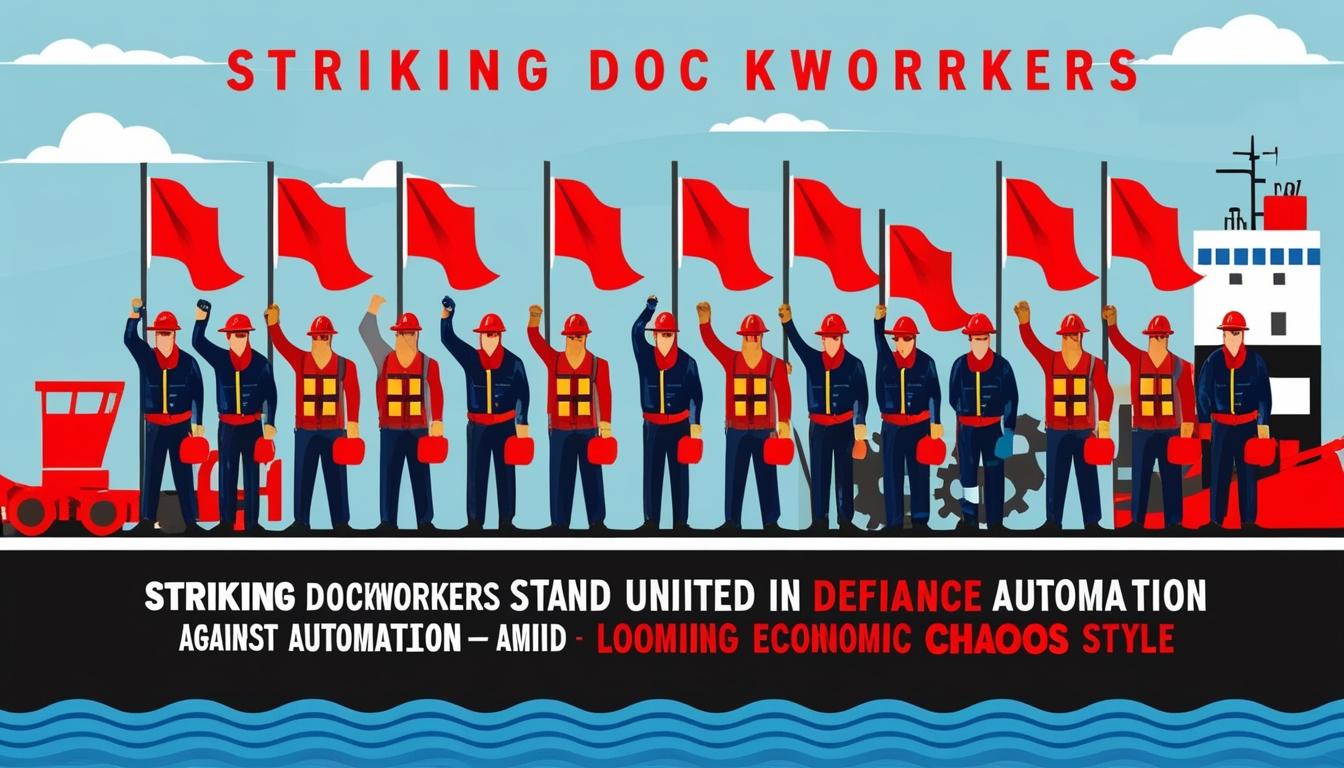In a contentious labour dispute that could significantly impact the U.S. economy, 45,000 longshoremen are threatening to strike, raising alarms about potential disruptions to vital ports along the East and Gulf coasts. The members of the International Longshoremen’s Association (ILA) are protesting against the increasing automation of their workplaces, particularly the introduction of semi-automated cranes operated through software, which they argue could displace human workers.
Negotiations between the ILA and the U.S. Maritime Alliance, which represents port operators and shipping companies, are set to resume this week, positioned against a looming deadline of 15 January. The ILA, led by President Harold Daggett, is adamant that the push for more automation is rooted in profit maximization at the expense of good-paying jobs. "This isn’t about meeting operational needs," said Dennis Daggett, the union’s executive vice president, "It’s about replacing workers under the guise of progress while maximizing corporate profits."
The backdrop of this dispute is significant. Last autumn, the same union staged a three-day strike that was suspended when a tentative agreement was reached, promising dockworkers a 62% pay raise over six years. However, as the final contract awaits union approval, the threat of a full-blown strike looms large. Following a meeting with Harold Daggett, President-elect Donald Trump expressed his support for the union's stance, claiming that further automation would adversely affect American workers, asserting that the perceived financial benefits do not balance the harm caused to workers.
The stakes surrounding this situation are high due to the critical role these ports play in the nation’s shipping container traffic, which accounts for over half of the United States' imports and exports. Mark Zandi, chief economist at Moody’s Analytics, remarked, “A strike that lasts less than a week won’t have a material impact on the broader economy,” but cautioned that a prolonged strike could incur costs escalating from $500 million a day to over $2 billion if it extends beyond a month.
The National Retail Federation's Jonathan Gold noted that supply chains typically require three to five days to recover from any disruption. In his view, a strike longer than five days could usher in severe complications, similar to the extensive recovery period experienced after the 11-day shutdown at West Coast ports in 2002.
In preparation for a potential strike, companies are already taking measures to mitigate supply chain disruptions. Some have opted to reroute shipments to alternative ports on the West Coast or to Canada. The Danish shipping giant Maersk has advised its customers to collect loaded containers ahead of the strike deadline. Furthermore, companies like Hapag-Lloyd have introduced “work disruption surcharges” to cover the anticipated costs related to the strike.
The current wage rate for top-paid dockworkers stands at $39 an hour, which could rise to more than $60 an hour if the new deal is ratified. According to a report from the Waterfront Commission, which governs New York Harbour, approximately one-third of dockworkers earn upwards of $200,000 annually when factoring in overtime and additional cargo royalties.
As discussions progress, the broader implications of automation in port operations remain a contentious topic. Research from the Centre for Innovation in Transport in Barcelona has suggested that there is no definitive evidence that automated terminals consistently achieve better performance than their conventional counterparts; however, the potential for technological advancements to change this dynamic remains.
With the situation rapidly evolving, both sides are under pressure to reach a resolution before the strike deadline, given the significant economic consequences tied to any potential work stoppage in these critical transportation hubs.
Source: Noah Wire Services
